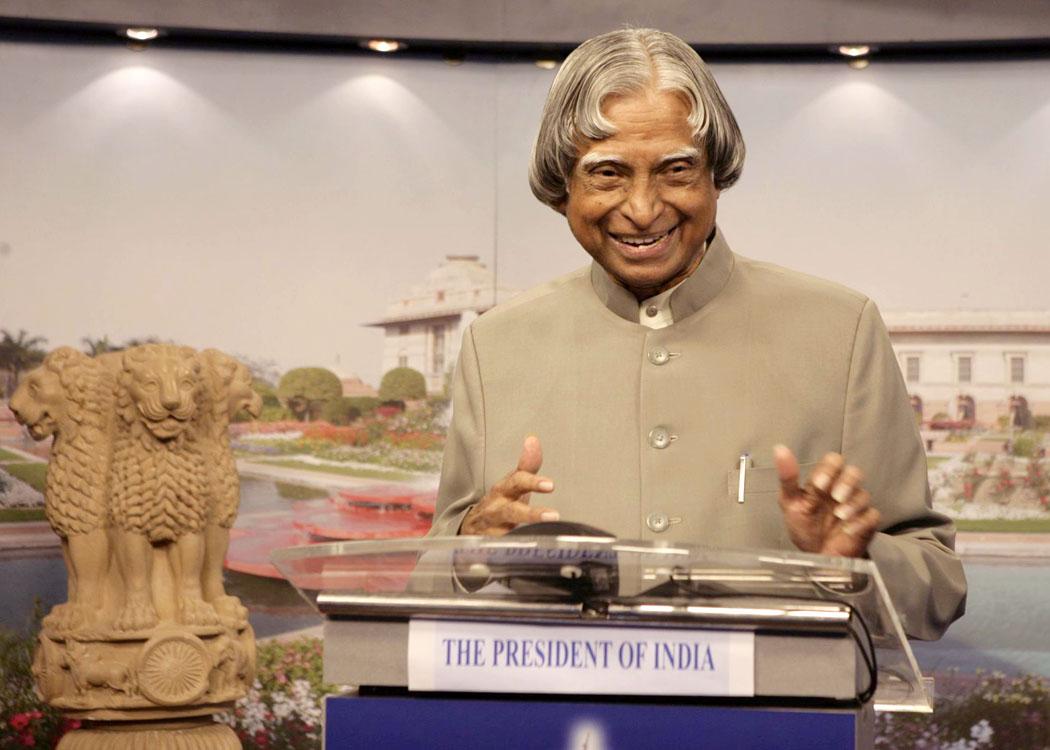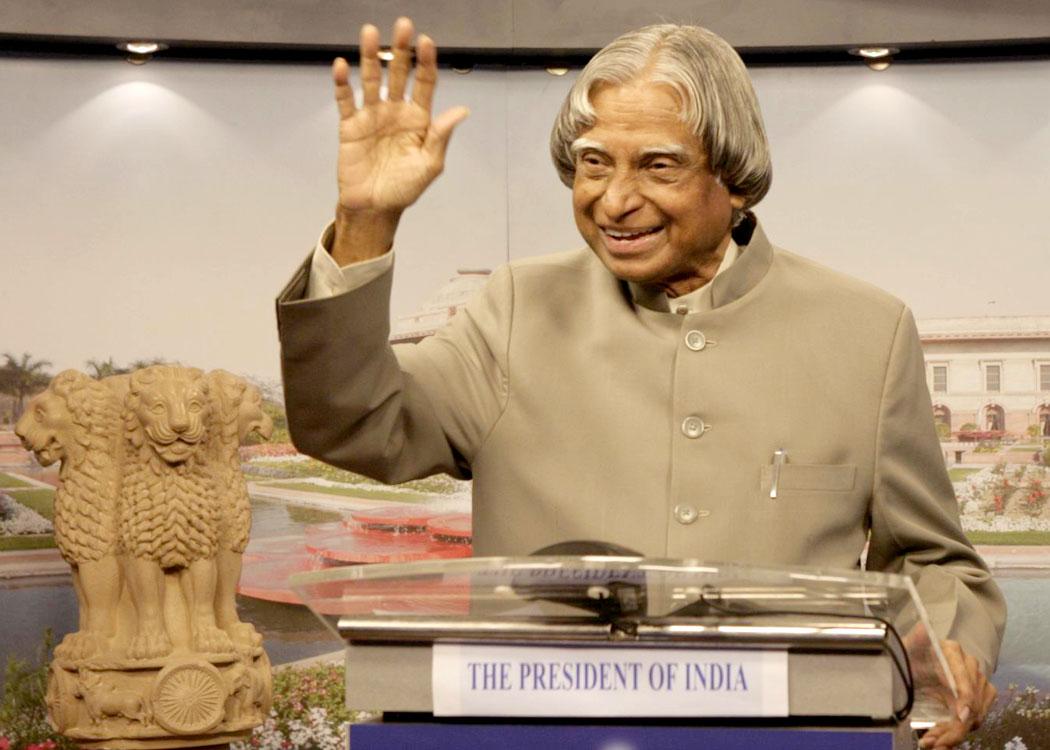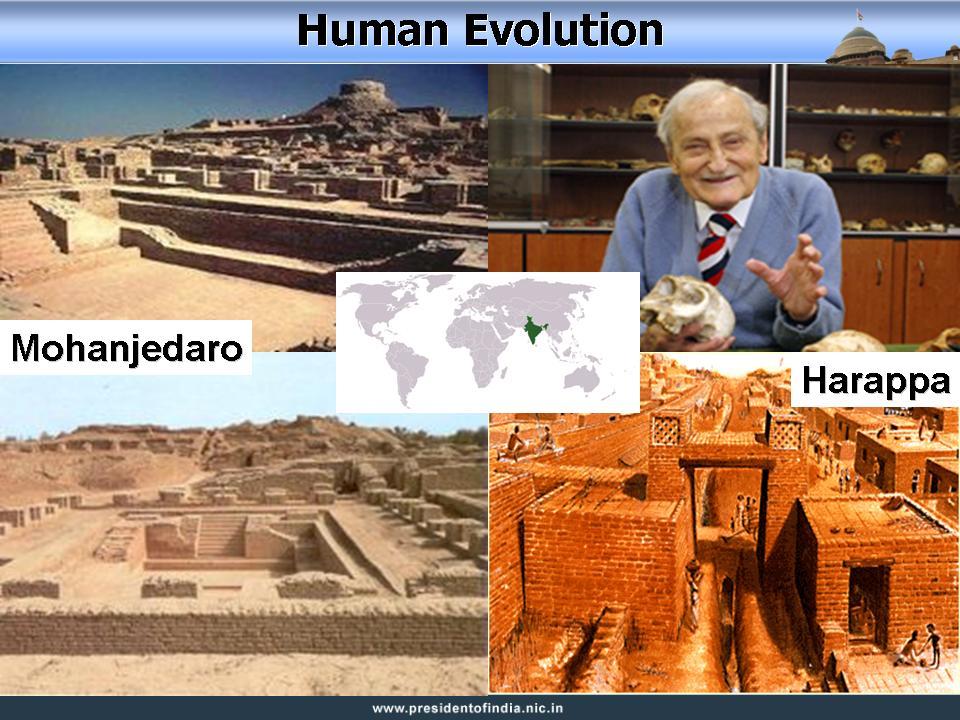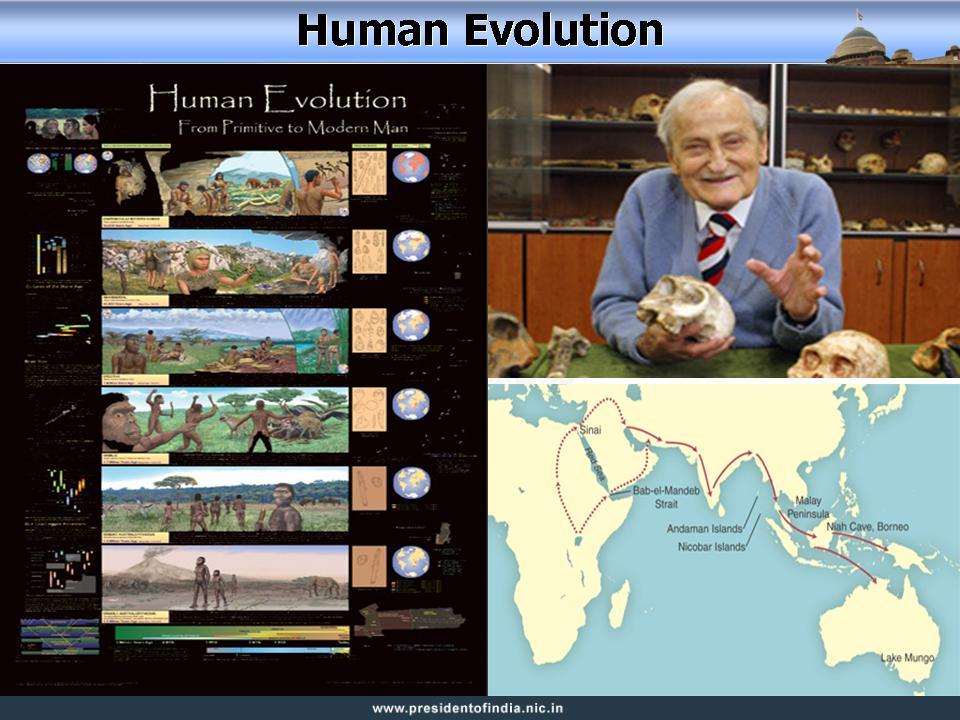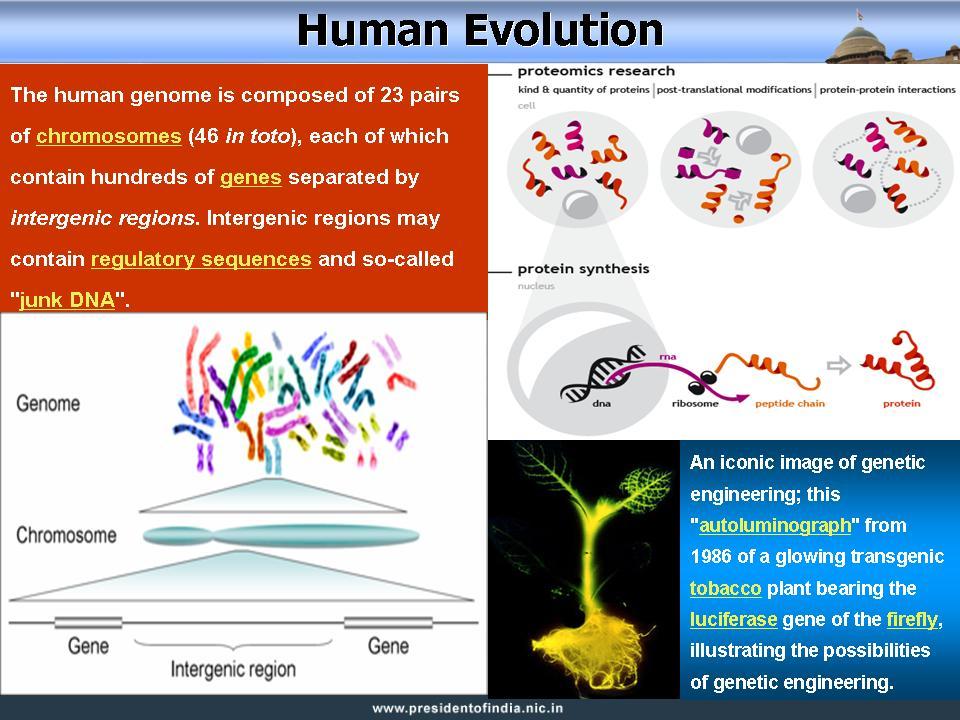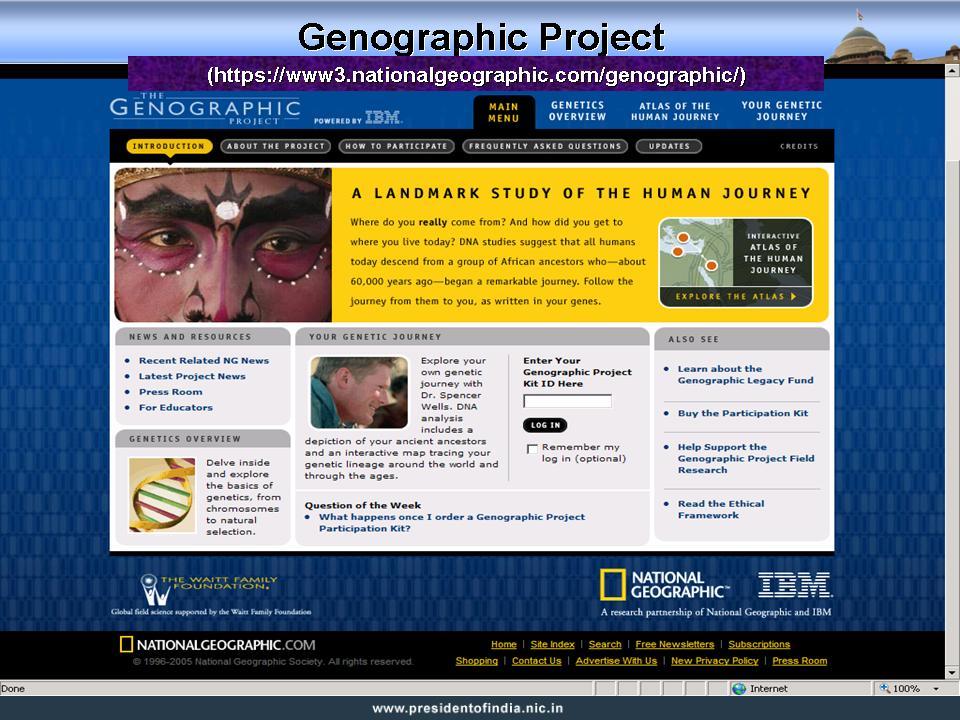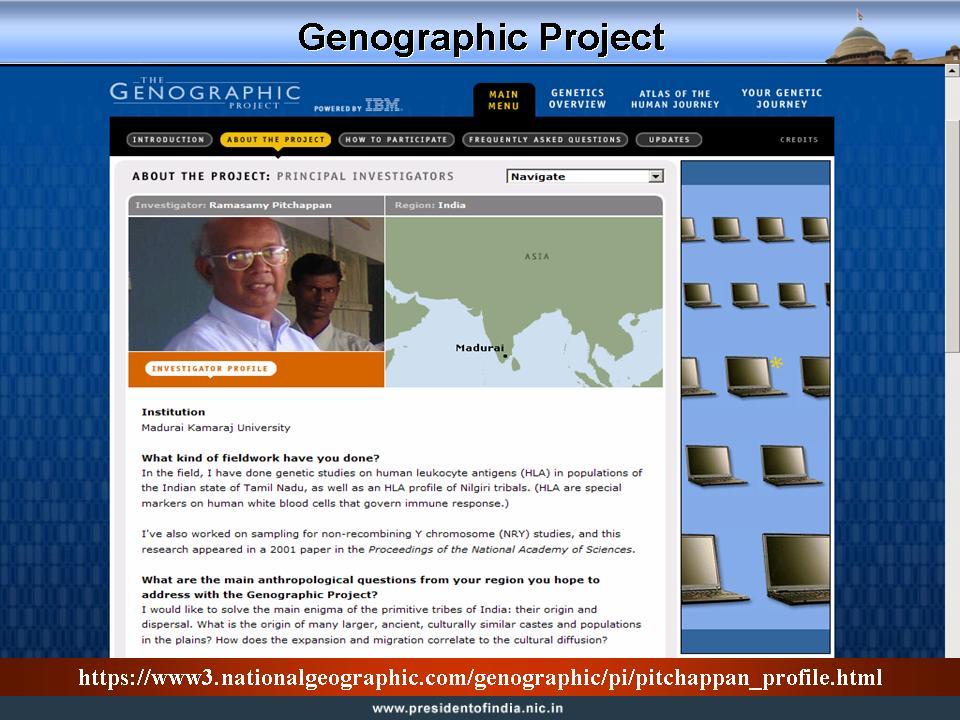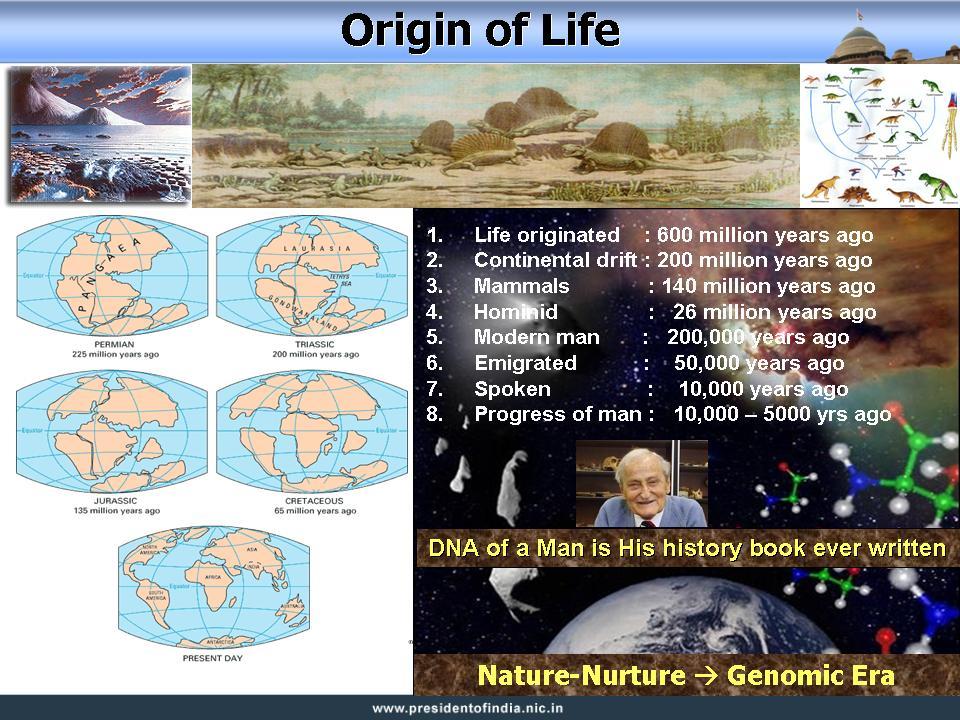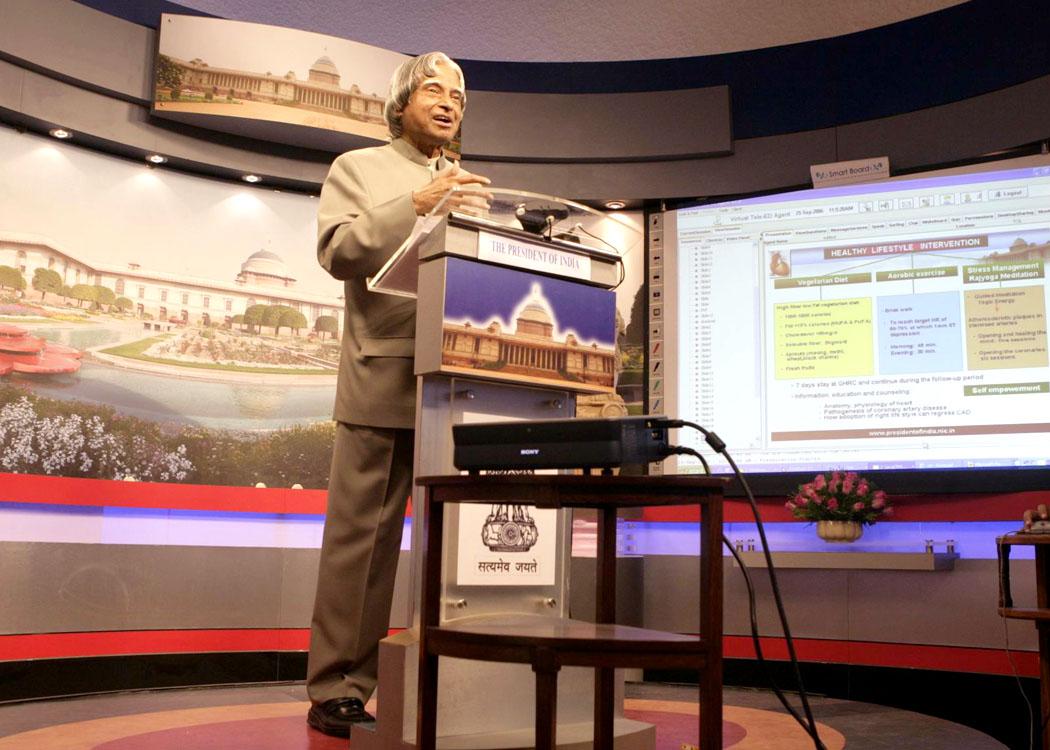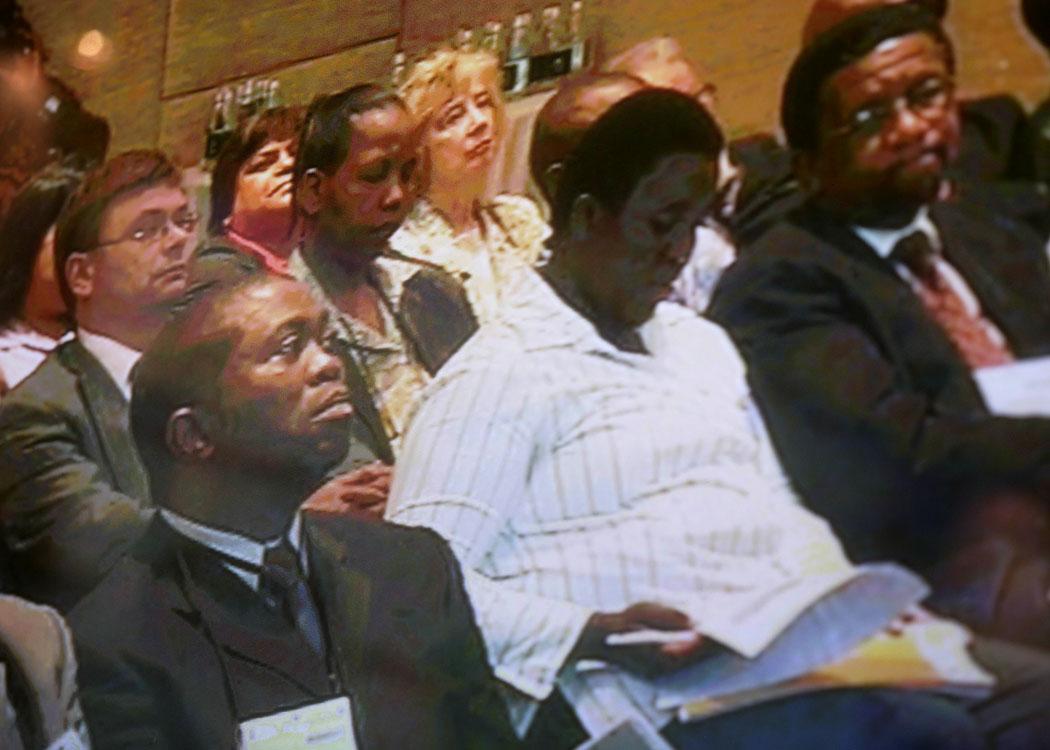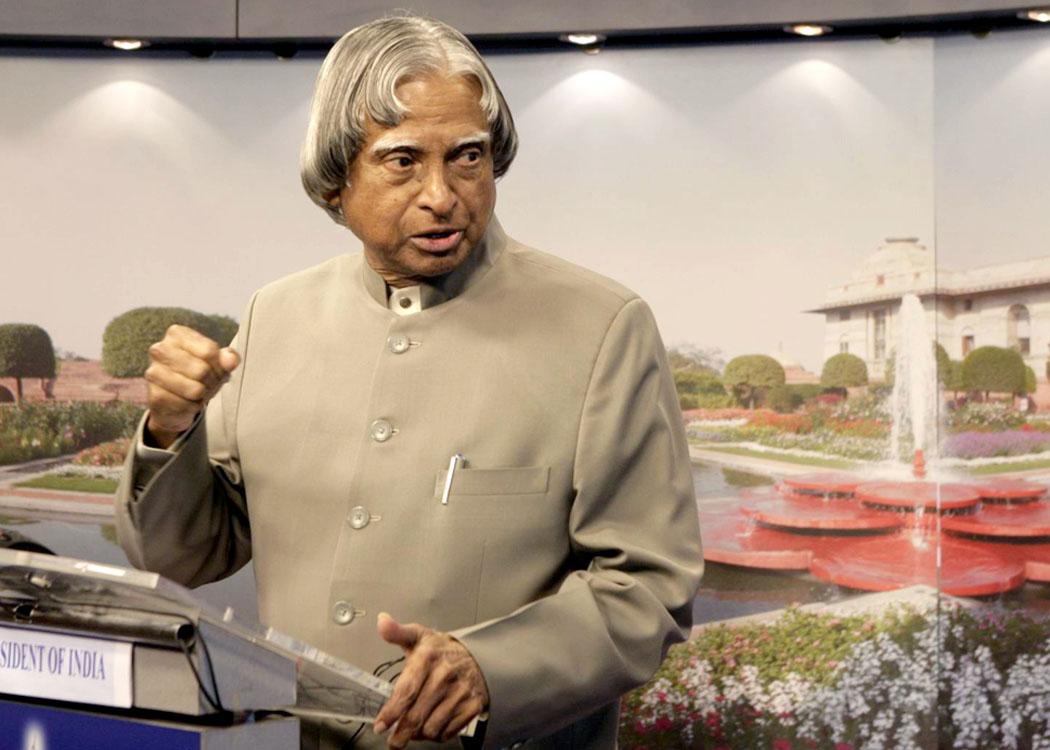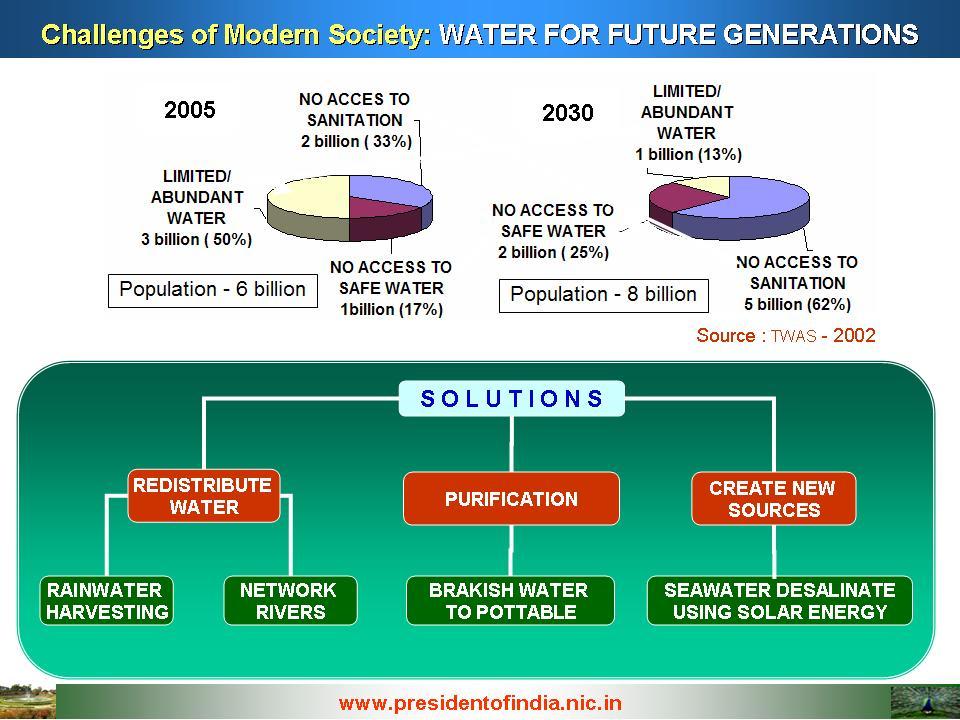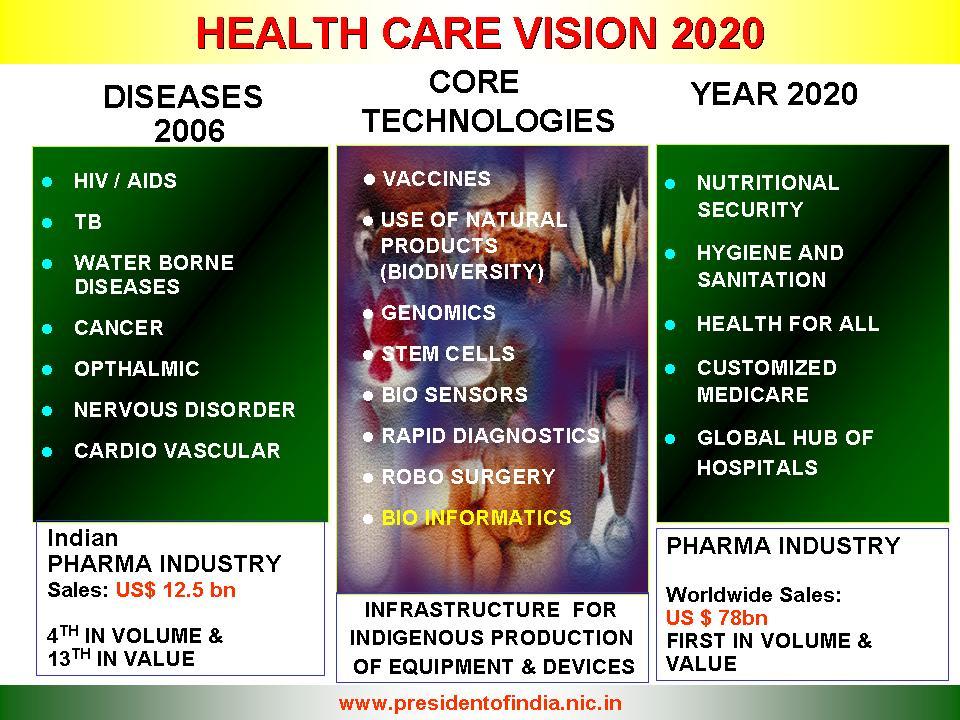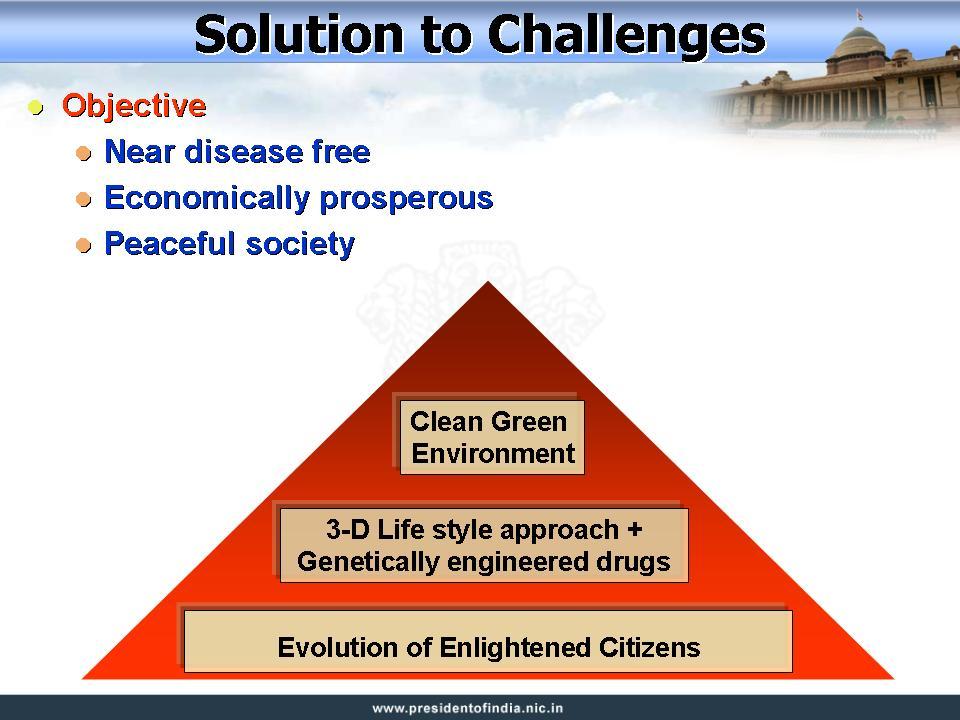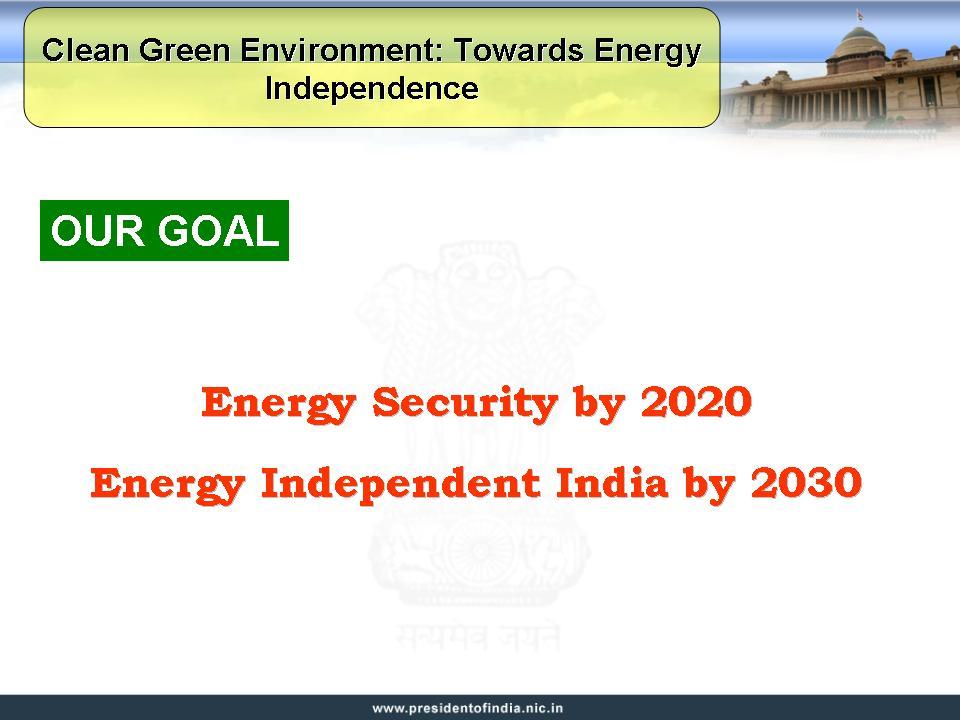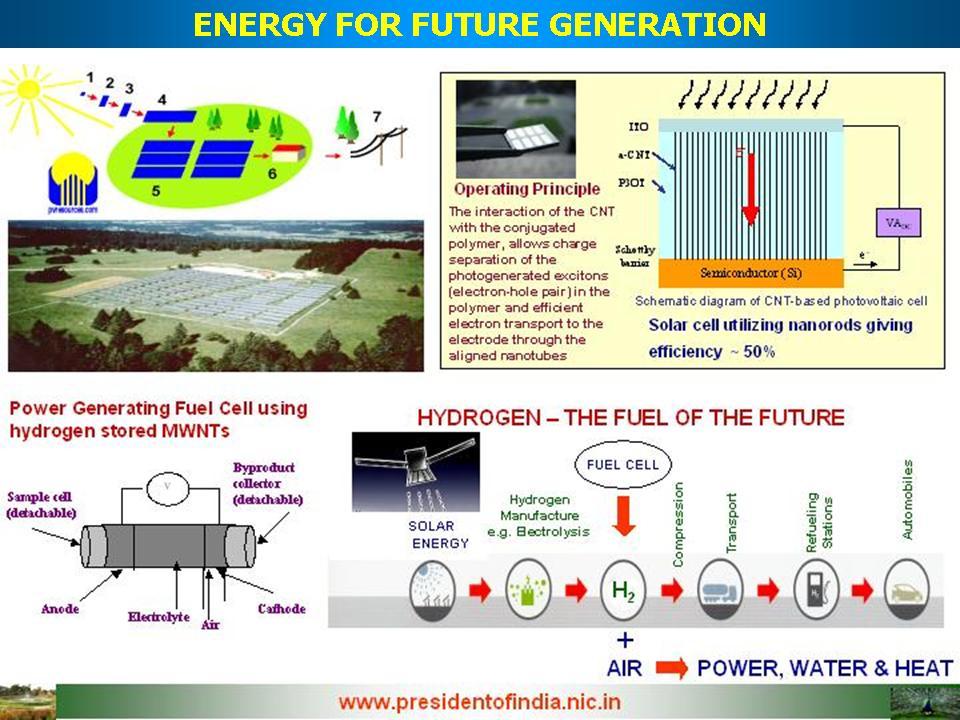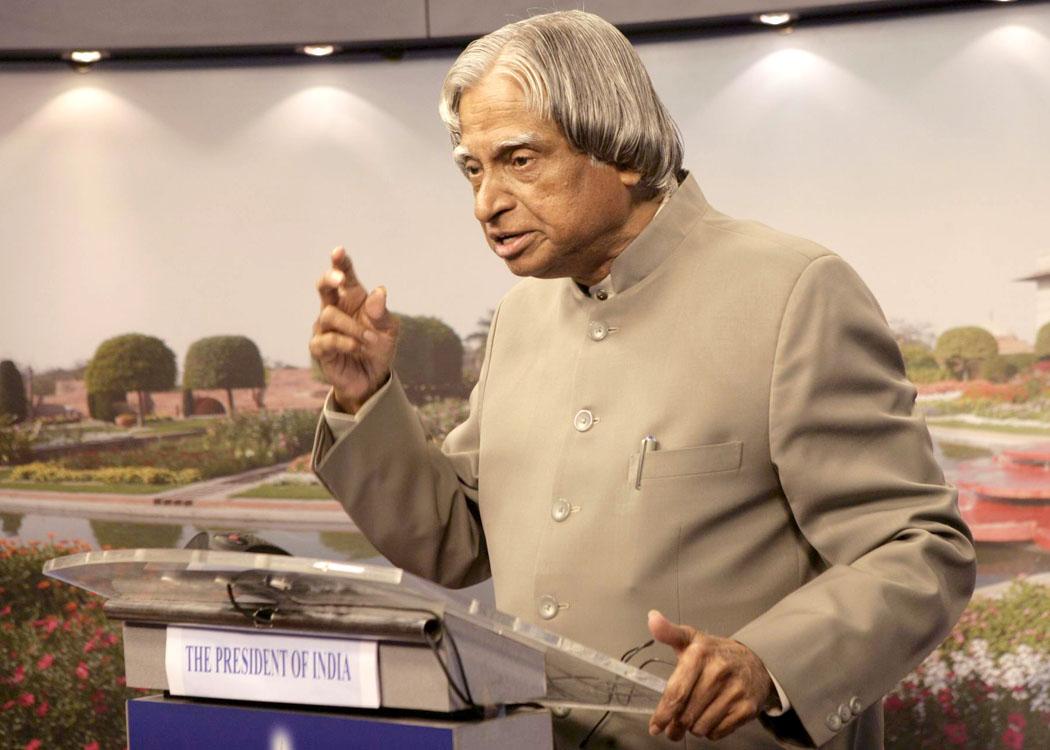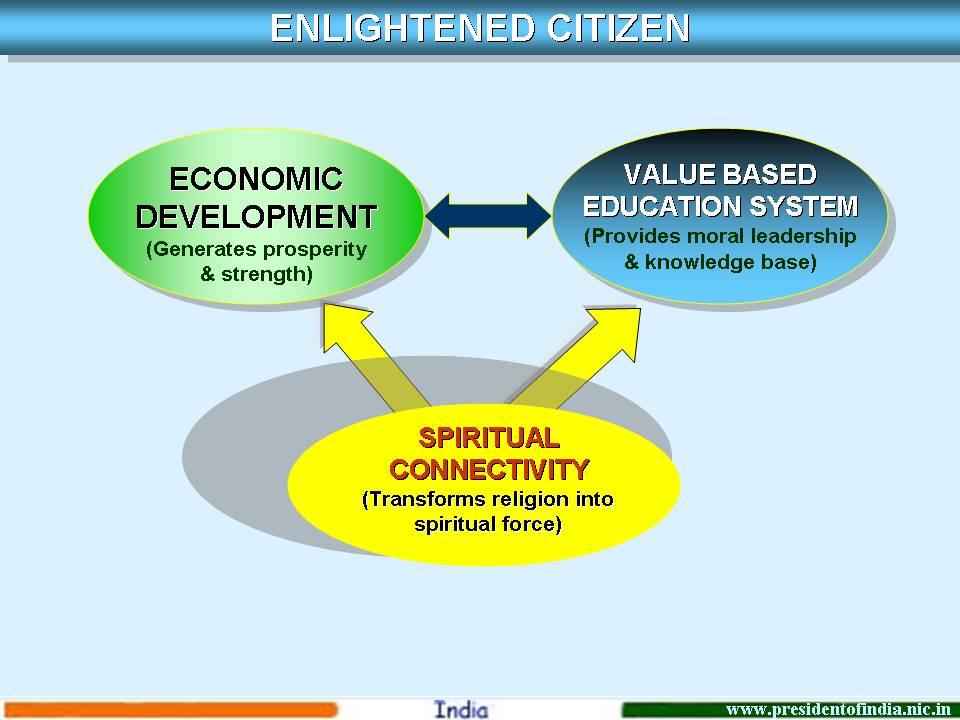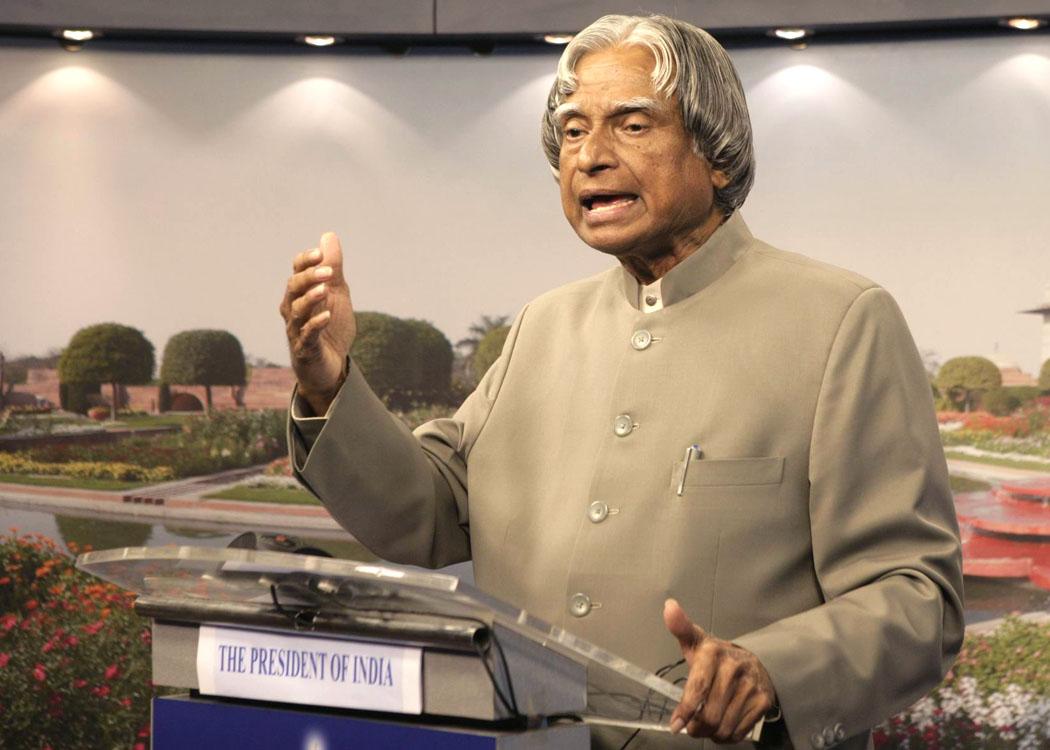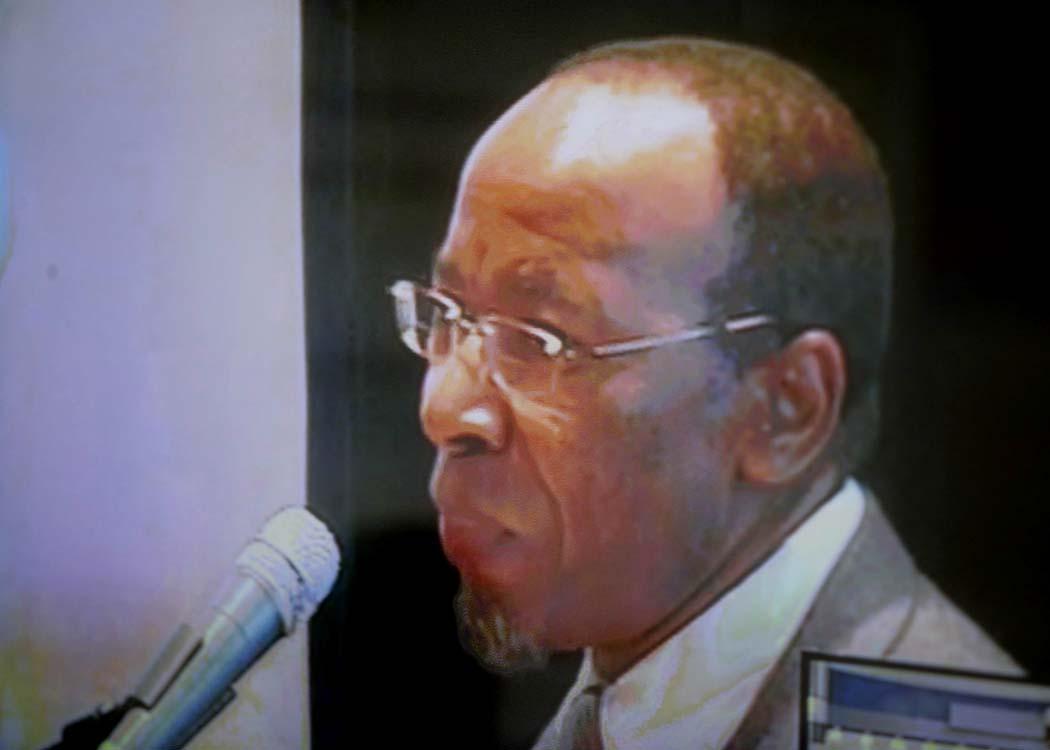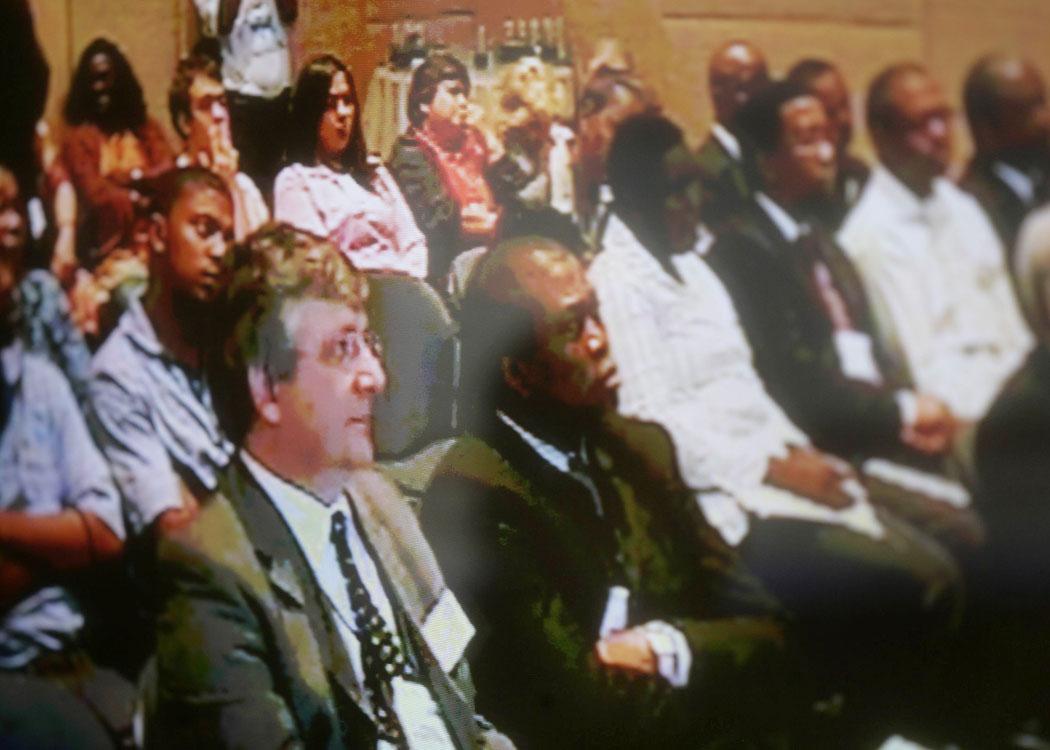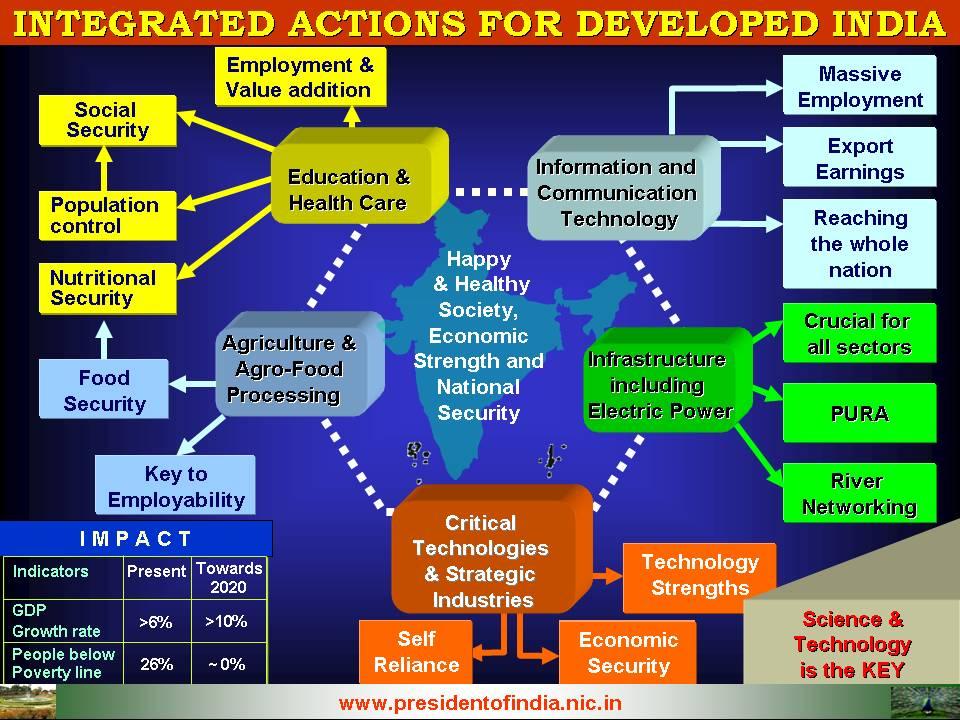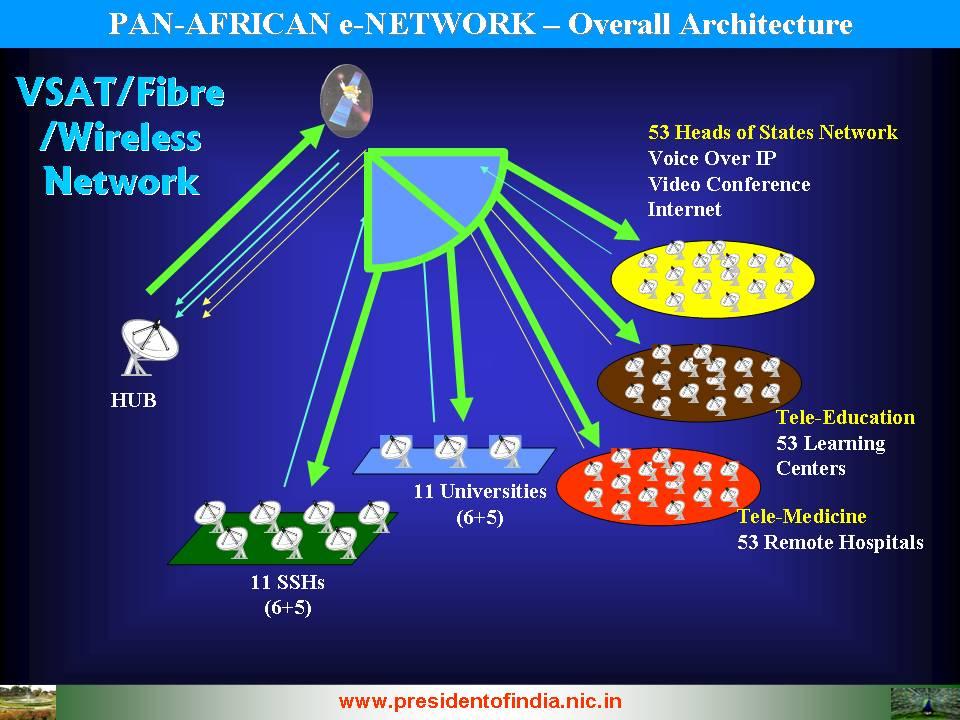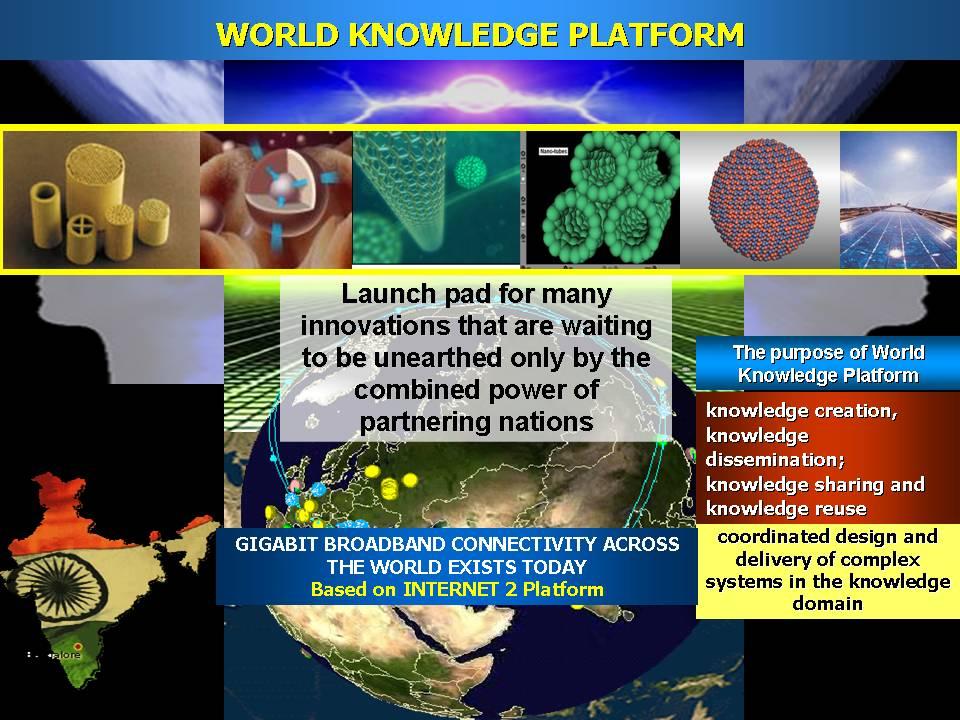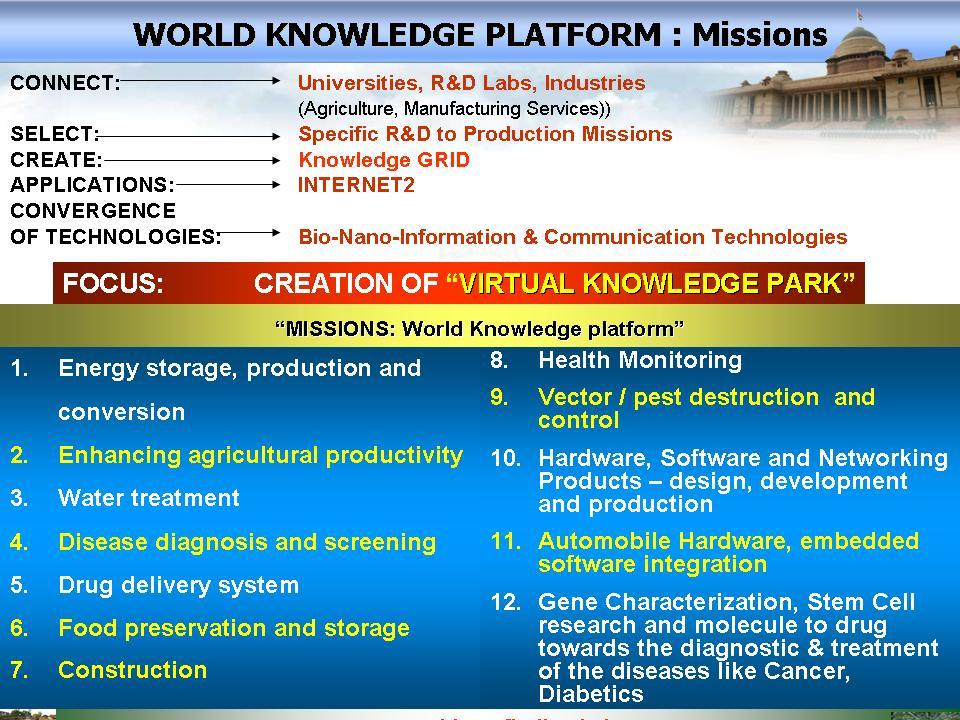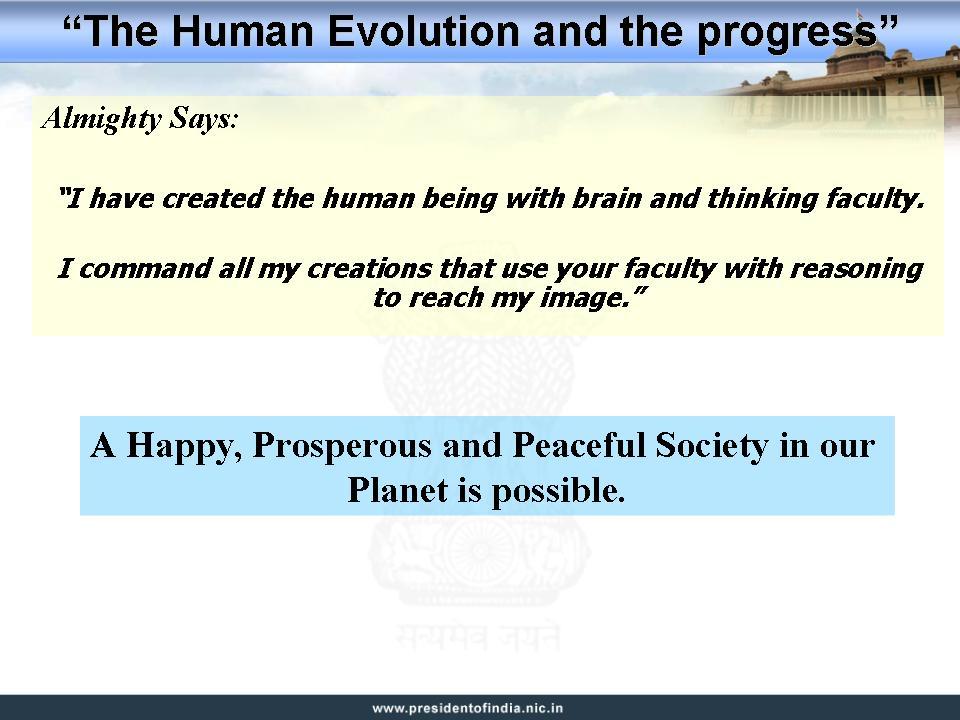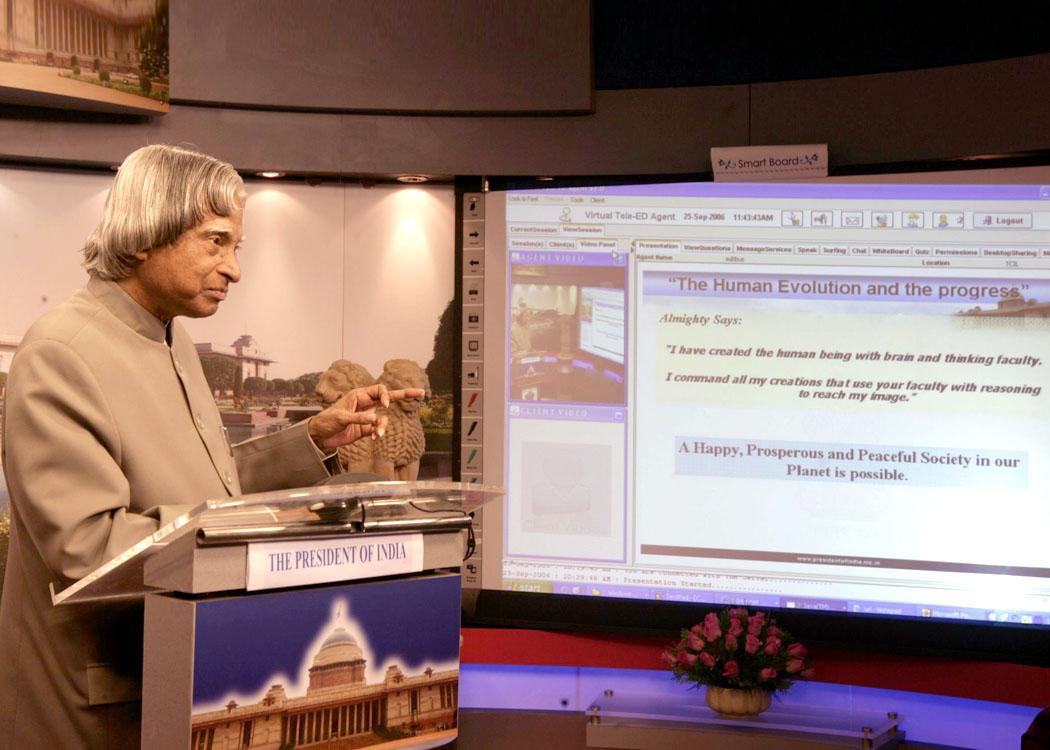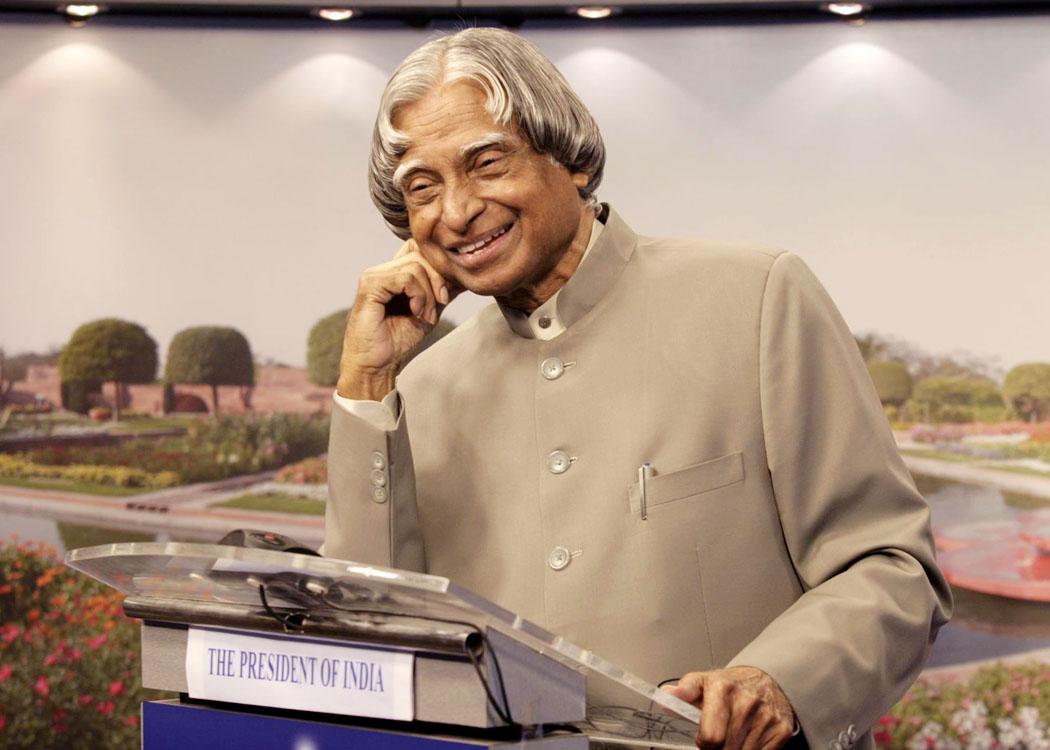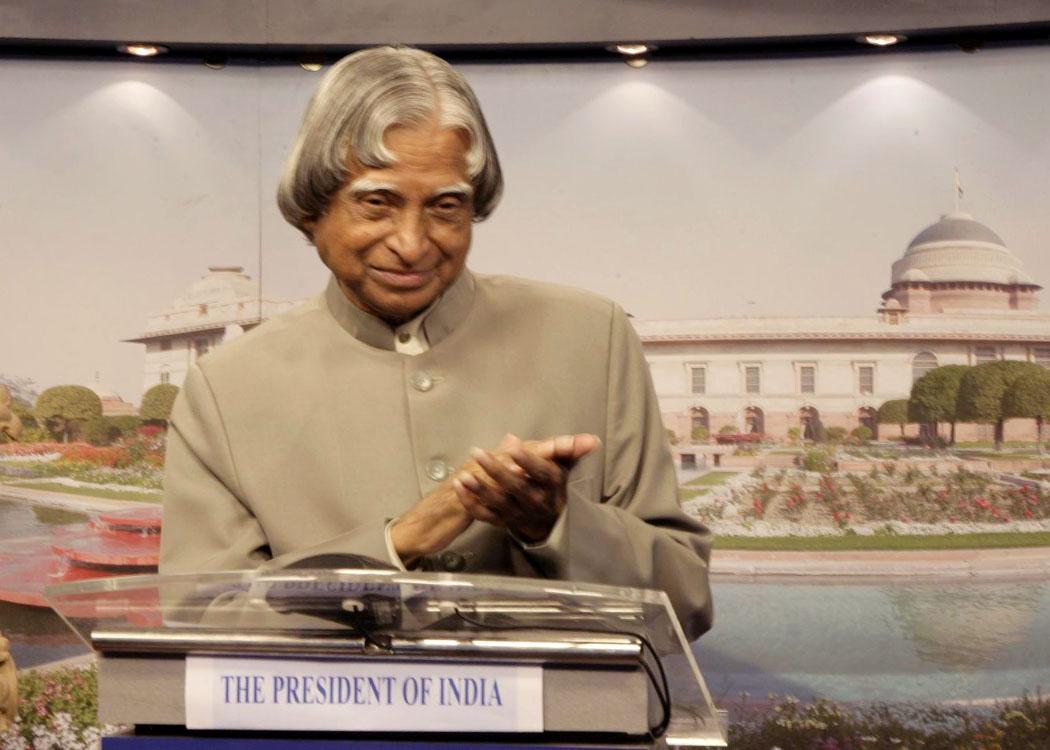2006 Phillip Tobias Lecture Multi-media Tele-conference From Rashtrapati Bhavan to Johannesburg, South Africa at Rb Multimedia Studio, New Delhi
New DelhiRB multimedia Studio, Rashtrapati Bhavan : 27-09-2006
The Human Evolution and the progress
"I have created the human being
with brain and thinking faculty.
I command all my creations that
use your faculty with reasoning
to reach my image."
I am delighted to deliver the 2006 Phillip Tobias Lecture. Prof. Phillip V. Tobias is indeed a world authority on human evolution and analysis of early hominid fossils. His work on the evolution of the human brain and the origin of spoken languages has been internationally recognized. Of course in South Africa, he is the great scientist among scientists. By scientifically fighting the apartheid system that existed in South Africa, his life became more purposeful. India greets the great South African scientist, Prof. Phillip Tobias with great respects. I would like to greet him in advance on his birthday, when he turns 81 on 14th October 2006. What inspires many research students of Prof. Tobias is his active scientific life of research and guidance that he has provided to thousands of students. Above all, he has derived love and respect from his students, whom he has made great. The major contribution of Prof. Tobias in genetics is the determination of evolutionary links between primates and early humans. I was thinking what thoughts I can share with you while I am delivering the 2006 Phillip Tobias Lecture. I have selected the topic ?Human Evolution and Progress?.
Human evolution
When I was studying the work of Prof. Tobias on Paleoanthropology and discovery of archeological sites, I thought of recalling the advances made in the research on human evolution. Traditionally there have been two distinct and different approaches in understanding human evolution. First is the archeological evidence. The lessons that we have learnt in India from Mohanjo-Daro and Harappa and many similar excavations the worlds over have been seminal and many a civilization?s way of living, its culture and its origins have become evident. It is heartening to note that Prof. Tobias has made a significant impact in this area, particularly emanating from land, which is the cradle of human evolution. The second and more recent approach is propelled by advances in our understanding of the human genome. While the major part of the human genome sequence is common between human beings and even with mice, the small portions that differ, control and contribute to the diversity that we find in the evolution of humans. This makes research in genetic engineering, using human genome sequences to understand the evolution of humans, very fascinating for scientists. Prof. Tobias is one of the pioneers in the area of genetics. From his vast experience in genetics and Paleoanthropology, Prof. Tobias has been able to present to the world in an understandable capsule form, the whole process of human evolution over 600 million years. The simplicity of the outcome of his complex research has also stimulated many scientists the world over to look at the challenges posed in our understanding of human evolution. Today, the world talks about convergence of many technologies. Prof. Tobias and others have shown us that all our origins converge to a single point both in space and time.
A genographic project was launched in April 2005 to carry out a genetic anthropological study that aims to map historical human migration patterns by collecting and analyzing DNA samples from over 100,000 people across five continents. This is a collaborative project between the National Geographic Society, IBM and the Waitt Family Foundation. Prof. R.M. Pitchappan of the Madurai Kamaraj University from India, is working on this project. My discussions with him have been thought provoking.
Origin of Life
Ancient human history has been revealed beautifully by Paleoanthropology. Life originated 600 million years ago and continental drift occurred 200 million years ago creating five continents. Mammals evolved 140 million years ago, Hominids that is the human type, evolved 26 million years ago but modern man only arrived on the scene some 200,000 years ago. He migrated and colonized the world only in the last 50,000 years. The spoken language is some 10,000 years old while writing evolved only a few thousand years ago. All this phenomenal progress has been achieved only within the short span of 200 to 400 generations, that is in just 10,000 to 5,000 years.
Such a complex web of evolution of humans had always fascinated the then young Tobias. He was drawn into the study of fossils by Mary and Louis Leakey, who asked him to write a description of a hominid skull, which they had discovered in the Olduvai Gorge in Tanzania. In 1964, with Louis Leakey and John Napier, he was the co-namer of Homo habilis, a new species and the first hominid with a larger brain capacity than Australopithecus africanus. Indeed it was the diabetes of his sister that made him to pursue genetic studies. Tobias thus was one among the earliest to provide evidence for the evolution of mankind in Africa and to think of a gene for a disease. These two instances clearly depict the extremely alert research mind of Tobias.
Newer DNA technologies have given us better insight in retracing the history of man. ? The DNA of a human being is his history book ever written?. Nowadays intelligence, cognizance, drug response, behavioral problems every thing is related to genes: disease gene mapping is progressing at a faster pace with new age DNA technology. It is probably during the 50,000-30,000 years of co-existence that societies have evolved adopting newer innovations and cultures.
Thus the ?Nature ? Nurture? philosophy holds good even in this Genomic Era: ?Genes? what we inherit from our parents is the basis; a beautiful ?building? is built over it, be it Tobias or certain unique creations, the environment plays a crucial role in shaping the destiny of the individual and leading to excellence. It is just the opportunity that makes Man. All children when they are born are equally poised to become a great scholar or Tobias. The nervous system as Tobias recalled and for that matter any of our systems should cooperate with an individual in his or her progress.
Challenges of modern society
Advances in genetics demonstrating great similarity in the genome of man and animals shows that the limbic brain perhaps is the cause for all conflicts within and outside.
So far human society, from origin until now has always been at war within and between groups and has led to two World Wars. Presently, terrorism and low intensity warfare is affecting many parts of the world.
Today, with a global population of 6 billion, only 3 billion have access to limited or perhaps satisfactory supply of drinking water. It is estimated that 33 percent of the world's population has no access to sanitation and 17 percent has no access to safe water. But by 2025 the world population is going to rise to 8 billion but only one billion will have sufficient water. Two billion, that is 25 percent will have no access to safe water. Five billion, that is 62 percent will have no access to sanitation. We should collectively find a solution for this problem.
The use of fossil fuels has caused enormous problems for the environment resulting in abnormal changes in climatic conditions. This has resulted in researchers to look for clean energy sources such as hydel power plants, nuclear power plants, energy from renewable sources such as solar, wind and tidal. Also, in the transportation sector there is a need to progressively introduce the use of bio-diesel and ethanol.
In the health care sector, major diseases like HIV/AIDS, cancer, tuberculosis, malaria, other water borne diseases and coronary artery diseases have increased considerably. Man is fighting a war on all fronts ? terrorism on one side, diseases and environmental degradation on the other.
Solutions to Challenges
What I would like to discuss with you is the possibility of creating a near disease free, economically prosperous and peaceful society. In my opinion, this could be achieved through a triangular approach namely (a) creation of clean green environment, (b) promotion of 3-D, that is a three dimensional life style approach to healthcare coupled with genetically engineered drugs and (c) evolution of enlightened citizens. I would like to share India?s experience which may be of certain relevance to South Africa and many other nations. The first area of our discussion will be the creation of a clean and green environment.
I. Creation of clean green environment
In the field of energy, many innovations are taking shape. The world energy forum has predicted that fossil based oil, coal and gas reserves will last for less than ten decades. Energy is an important parameter for development. Continuously increasing cost of oil sourced from fossil material has prompted many groups to seriously consider the possible energy options. India?s target is to achieve Energy Security by 2020 leading to Energy Independence by 2030 and beyond.
Structure of Energy Sources:
Based on progress visualized for India during the next two decades, power generating capacity has to increase to 400,000 MW by 2030 from the existing 130,000 MW. This has been arrived at taking into account the use of efficient transmission and distribution systems and minimization of other losses. Energy independence has to be achieved through three different sources namely hydel capacity, nuclear power and non-conventional energy sources primarily through solar energy, apart from thermal power. The hydel capacity generated through normal water sources and inter-linking of rivers is expected to contribute an additional 50,000 MW. Large-scale solar energy farms of hundreds of megawatts capacity in certain number could contribute around 55,000 MW. Nuclear power plants will have a target of 50,000 MW of power. The balance 115,000 MW has to be generated through conventional thermal plants through clean coal technologies gas and other renewable sources of energy such as wind power, biomass, power through municipal waste and solar thermal power. The most significant aspect, however would be that power generated through renewable energy technologies has to be increased to 25 percent against the present 5 percent. In the transportation sector, India plans to use a large proportion of bio-diesel and ethanol.
This will lead to a clean environment, a hygienic environment for the reasons that we will be partially eliminating fossil material usage that generates the maximum carbon. Now the results are coming in, we can live without fossil material based fuel through solar power generation, nuclear power generation, and hydro power generation. Billions of tonnes of carbon let into the Earth's atmosphere can be nearly eliminated. Similarly by networking rivers of every nation and the large-scale use of the desalination process in coastal areas, adequate quantity of potable water, water for sanitation and irrigation can be effectively provided. Increased aforestation may also lead to conditions favourable for monsoon rains. The clean green environment will make our planet friendlier for the humanity to grow. Now, I would like to discuss improved healthcare systems for the people.
II. Promotion of 3-D Life style approach to healthcare
The discovery of genes and the nature of chromosomes through the human genome project, as you all know, has led to the conclusion that each human being, has nearly about 30,000 genes. The most challenging programme is the proteomics programme, which calls for characterization of proteins from every gene. This will lead to Research and Development and production of genetically engineered drugs and can open a new field of pharmaco genomics and customized medicine. These advanced drugs and other medical interventions can definitely improve the quality of medicare available to patients considerably. However, experimental evidence shows the importance of a favourable lifestyle for realizing long term disease free life.
I would like to present the experience of one such life style intervention. I happened to visit a number of hospitals to see the healthcare delivery systems. During my visit to hospitals, I found that doctors tend to focus their attention on treatment of body ailments to reverse pathology to physiology. It was realized that the success rate of such treatment is only partial. A group of Indian scientists had an opportunity to experiment the concept of mind-body complex approach for therapy on breast cancer patients, when the psycho-neuro, immunological axis was demonstrated to significantly influence the prognosis of these patients. Another experimental evidence of this concept emerged from a study, we had initiated at the Defence Research and Development Organization (DRDO) in collaboration with Global Hospital Research Centre at Mount Abu in Western India, on the regression of Coronary Artery Disease (CAD) through a 3 dimensional life style intervention. It included (a) low fat high fiber diet (b) regular aerobic exercise of walking and (c) meditation. The study clearly demonstrated that lifestyle intervention resulted in regression of Coronary Artery Disease (CAD) as evidenced by the disappearance of plaque in angiograms. Every individual has an inherent ability of spiritual potential which lies dormant. If we invoke this potential, we can definitely enhance the process of healing and improve the quality of life of patients.
Such a three dimensional approach to health care will be a significant evolution of health care philosophy and can be applicable for the treatment of diseases including HIV/AIDS, cancer, diabetes and many other chronic diseases. This life style approach is not only less costly but also provides a sustainable solution for improving the quality of life of individuals. The third area which I would like to discuss is the evolution of enlightened citizenship.
III. Evolution of enlightened citizenship
I would like to put forth to this intellectual gathering, an action oriented solution for evolving a happy, prosperous and peaceful society on our planet, which I call as ?Enlightened Society?. How do we create such an enlightened society, which has three components (a) Education with a value system (b) Religion transforming into spirituality and (c) Economic development for societal transformation. Let us discuss this issue.
(a) Education with value system: The best part for a person is his or her childhood and the learning period in school. The prime learning environment is five to seventeen years of age. Of course, at home, love and affection are imparted. But again most of the time is spent in preparing school homework and study, eat, play and sleep. Hence school hours for children are the best time for learning and they need the best of environment and mission oriented learning with a value system. During this stage, they need value based education in school and at home for them to become good citizens. This reminds me of the words of a great teacher's saying, "give me a child for seven years. Afterwards, let the God or devil take the child. They cannot change the child." This indicates the power of great teachers. For parents and teachers, the school campus and home have to have an integrated mission that is education with a value system. They must inculcate moral leadership amongst children, which involves two aspects. First it requires the ability to have compelling and powerful dreams or visions of human betterment, a state of things in which human beings could be better off in the future than they are now. Secondly, moral leadership requires a disposition to do the right thing and influence others also to do the right thing. If the child misses this value based education in school, no government or society can establish a transparent society or a society with integrity. During this period, it is essential to elevate young minds through moral science classes at least for one hour each week, delivered by great teachers. That will elevate young minds to love their country, to love other human beings and elevate the young to higher planes. Throughout the world, in every school, till the age of 17, it is essential that moral science is taught. Such enlightened individuals will definitely promote peace and harmony on the planet. Now, I would like to share an experience that I have had regarding religion transforming itself into a dynamic spiritual force.
(b) Religion Transforming into Spirituality: Universal Mind
I would like to recall an incident that happened four decades ago. Prof. Vikram Sarabhai is the visionary of the space programme in India. He is well known for his cosmic ray research area that led to evolving the space research programme for the nation. Prof. Sarabhai was looking for a site to establish a space research station in the equatorial region of India. He visited a number of places. Thumba in Kerala in Southern India was selected by the scientific community for space research, as it is near the equatorial region and is ideally suited for ionospheric research in the upper atmosphere apart from the study of the atmospheric structure. When Prof. Sarabhai visited Thumba, the locality had a series of villages and thousands of fishermen folk were living in that area. It also had a beautiful ancient church, the St. Mary Magdalene Church, Pallithura and a Bishop's House. Prof. Sarabhai met many politicians and bureaucrats to get the place for the work of space science research. It did not move further because of the nature of the place. He was asked to see the Bishop of Trivandrum, at that time in 1962, Rev. Father Dr. Peter Bernard Pereira. It was a Saturday when Prof. Sarabhai met the Bishop. The Bishop smiled and asked him to meet him the next day, that is Sunday. In the morning after Church Service, the Bishop told the congregation, "my children, I have a famous scientist with me who wants our church and the place I live, for the work of space science research. Dear children, science seeks truth by reasoning. In one way, science and spiritualism seek the same divine blessings for doing good to the people. My children, can we give God's abode for a scientific mission?" There was a chorus of 'Amen' from the congregation and the whole church reverberated. Subsequently, the big event took place in 1962. Rev. Dr. Peter Bernard Pereira, the Bishop of Trivandrum, took the noble decision to dedicate the church in recognition of India's national goal of establishing the Indian Space Research Organisation (ISRO) at Pallithura, Thumba. That was the church where we had our design centre, started rocket assembly, design of filament winding machine for FRP product and the Bishop's house was our scientists' place. Later, the Thumba Equatorial Rocket Launching Station (TERLS) led to the establishment of the Vikram Sarabhai Space Centre (VSSC) and multiple space centres throughout the country.
When I think of this event, I can see how enlightened spiritual and scientific leaders, all converge towards giving reverence to human life. A new church and new schools were established in record time. Of course the birth of TERLS and then VSSC gave India the capability to design, develope and produce world class huge rocket systems and subsequently, India developed the capability of launching geo-synchronous, sun-synchronous and meteorology spacecraft, communication satellites and remote sensing satellites, thereby providing fast communication, weather forecasting and also locating water resources for the country. Today, among us, Prof. Vikram Sarabhai is no longer there, Rev. Dr. Peter Bernard Pereira is also no longer there, but those who are responsible for the creation and making of the flower blossom will themselves be a different kind of flower as described in the Bhagwat Gita: "See the flower, how generously it distributes perfume and honey. It gives to all, gives freely of its love. When its work is done, it falls away quietly. Try to be like the flower, unassuming despite all its qualities". What a beautiful message for all generations, on integration of minds and a universal mind. No where in the world has a church been given for scientific research, it has happened only in India. It is a great message to be spread. The message is, the best component of religion can be transformed into a spiritual force that will shape society. Let me now discuss with you the third component of an enlightened society for transforming a developing nation into a developed nation through achieving economic prosperity, so that large societal imbalances can be removed. In this connection, let me give you an example from India, which has one sixth of the world's population.
(c) Transforming our nations into a economically developed nation
We have in India a population of over one billion people of which 220 million are still living below the poverty line. They need education, they need habitat, they need health care, and creation of employment potential. To meet their needs we have a second vision of transforming India into a developed nation by 2020. We have identified five areas where India has core competence for integrated action: (1) Agriculture and food processing (2) Education and Healthcare (3) Information and Communication Technology (4) Infrastructure development such as power, transportation, communication, including Providing Urban Amenities in Rural Areas (PURA) network and (5) Self reliance in critical technologies. These five areas are closely inter-related and if implemented in a coordinated way, will lead to food, and economic security, and national security. A strong partnership among the R&D, academy, industry and the community as a whole with Government departments will be essential to accomplish the vision for a developed India. The Indian GDP is growing at an average rate of 8 percent per year whereas the economists suggest that to remove the poverty of 220 million people we have to grow at the rate of 10 percent per year consistently for over a decade. One of the components through which the rural-urban divide will be bridged and prosperity will be brought to seven hundred million people living in six hundred thousand villages is Providing Urban Amenities in Rural Areas (PURA) in seven thousand clusters. Through a national vision, using the core-competence of individual nations and partnership of friendly countries, it will definitely be possible, to transform a developing country into a developed country as planned. Let me share with you certain experiences how countries can co-operate for mutual development of nations.
During my visit to South Africa in 2004, I addressed the Pan African Parliament at Johannesburg and subsequently India has taken up the project called Pan African e-Network for capacity building in education and healthcare among 53 African nations through tele-education and tele-medicine services and creating the Heads of the States? Network. This programme is progressing and will be completed by 2007.
I would like to propose the World Knowledge Platform which I have already discussed in many nations. Today I would like to invite South Africa to participate in the World Knowledge Platform programme which will integrate the core competencies of partner countries to develop knowledge products. This platform will enable joint design, development, cost effective production and marketing of knowledge products in various domains based on the core competence of partner nations to international markets. India and South Africa can work together on this mission. This will lead to economic development with prosperity for partnering nations.
Conclusion
We discussed human evolution and also the accompanying conflicts and problems. I have presented a dynamic model which calls for transformation of the world community into a prosperous, peaceful and happy society through three major components. I also discussed the creation of a clean green environment, three dimensional life style intervention for health care along with genetically engineered drugs and creation of enlightened citizens through education with value system, religion transforming into spiritual force and a every nation having a vision to transform into a developed nation . Both our countries with other partners can work for the mission of transforming the planet into a peaceful, prosperous and happy place to live. This will be a great progress after human evolution.
My best wishes to all the participants of this 2006 Philip Tobias Lecture.
May God bless you.

